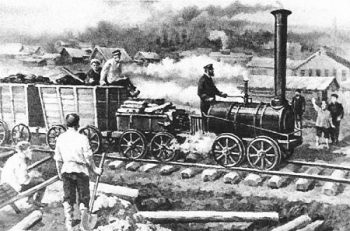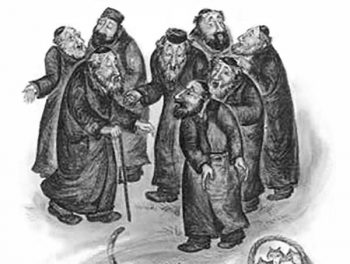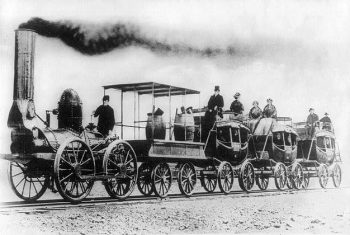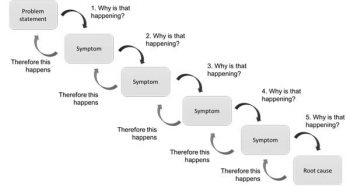Investigate like children
The slogan embroidered in golden thread on the flying banner of Quality Assurance says: “Constant Improvement”. And if we ask: how is “constant improvement” achieved? The answer would be: investigate.
And what is the way too many places go about investigating? Finding the bad results (non-conformance) and removing them, while focusing on creating good results (conformance).
And how is that done? By observing and tweaking the parameters, until we get the required results, conformance.
But something is lacking in this model.
It treats the result, not the cause. The symptom, not the disease.
Why? Because we haven’t investigated deeply enough. We look at what appears clearly in front of us, and not on the hidden, the innermost, waiting to be uncovered and discovered. In Quality Assurance we call it the root cause.
This reminds me of a story of the Helem Sages stories.
The tale of wagons with no horses
It is told that one day the people of Helem town woke up in the morning and saw a fantastic thing right outside their town: there were two rails on the ground, and on them forty wagons were moving in a long line. Wagons, you say? Anyone has seen wagons! In a long line, you say? That, too, is not so rare. Forty, you say? Oh, well, that can happen, as well. But these wagons were moving with no horses! On their own!
The Helem townspeople have all gathered in front of the house of the seven oldest Sages and went on to talking and thinking and pondering, how these wagons could move with no horses.
They thought the whole day, and then another day, then they grew tired and all went to their homes, feeling very disturbed. And the wagons kept going by the town from time to time. And only the seven oldest Sages were left to think and find out the answer. Upon seven days of thinking and coming up with nothing they have decided to send the youngest of the Sages, a mere 105-year-old, to investigate this matter and discover where the wagons were going and what made it possible for them to move with no horses.
The young Sage has gone to the big city, and when he returned a week later, the townspeople gathered all around him in excitement to hear what he has uncovered.
– Have you been to the big city? – they asked.
– I have been there, – he said.
– And have you seen the line of wagons? – they asked.
– I have seen them, – he answered.
– So have you discovered what moves them? – they asked.
– Indeed I have, – he replied. – I have investigated how it is possible for the wagons to move with no horses, and then I went to look at the last wagon in a long line of 40 wagons, and I found it was tied to the 39th wagon with a cable, and it is that wagon that pulls it.
– Ahhh, – everyone said and nodded their heads. – Now it’s clear.
– And what moves the 39th wagon? – asked suddenly a young child, standing at the front of the crowd with his mother.
A rustle of whispers went through the crowd. They all nodded their heads again. Excellent question!
– This, too, I have investigated, – replied the young old man, waving his arms in the air in excitement. – The 39th wagon is tied to the 38th wagon with a cable, and it is that wagon that pulls it.
– Ahhhhh, – everyone nodded their heads again. – Of course, now it’s clear.
– And what moves the 38th wagon? – the curious child asked again and looked at the Sage, peeping from behind his mother’s apron.
– The same question has popped into my mind, also, – explained the Sage and began drawing in the dirt with his walking stick. – It so happens that the 38th wagon is tied to the 37th wagon, and that one is tied to the 36th wagon, and that is tied to the 35th wagon… – and he went on to explain how the wagons have each pulled the one behind it.
– Ahhhhhhh, – everyone sighed and nodded their heads in understanding. – Well, now it’s all quite clear.
– And what moves the first wagon? – the relentless child kept asking, his eyes wide open with curiosity as he examined the drawing on the ground in front of him.
– Oy wey, – sighed the Sage, much wearied by all this exertion. – The answer to this question I was unable to discover.
The townsfolk all began talking at once, here and there a cry was heard of distress, or perhaps less than satisfaction with their Sage’s depth of investigation. And he, quite tired from standing on his feet so long (there were, after all, 40 wagons in the line!) and his trip, from which he has only just returned, has lost his patience, and cried, shaking his beard:
– Shame on you! I have discovered so much, and explained to you how 40 wagons moved on their own! And only about the one wagon I have no answer, and this is how you repay me?

Children love to investigate
The reference to the young boy is most interesting here, who, unlike the adults, is not satisfied with the old Sage’s answers. And anyone who has children knows it is true. It is not out of mistrust or suspicion that he is not satisfied, but simply because his own questions are not getting answered. The child’s innermost urge to understand how things work, his physiological need to learn the rules of this universe do not allow him to stop until he can no longer see a possibility for a deeper level. To the very bottom of things.
What is the one favorite word of a four- to six-year-old child? Anyone who had experience with them knows: it is “Why”. The child asks a question, gets an answer, thinks and asks again: “Why is that?” He makes us dig in and answer, and then: “Why is that?” again and again, until the parent is exhausted or loses patience. The child doesn’t stop on his own until he reaches the last depth he can understand, where it seems clear there are no more “Why” behind it. The cause at the very bottom .
And what about adults?
Adults, on the other hand, have learned the hard way with years of experience not to ask too many questions. They learned at school that he who asks question is ridiculed or called stupid. They learned that teachers dislike those questioning them or not simply accepting the answers they were given. They learned that parents want them to stop asking so many questions.
School taught them that when teachers talk students are silent. Society taught them not to “pester” everybody with questions, and that teachers and parents “knew best”.
Those who went to university or college, learned to accept the “experts” words as gospel. Those who didn’t – learned to accept them from others, the media etc., for what did they know being unlearned?
They have learned to accept the answers given to them as true, and to treat symptoms as causes, no to investigate too much.
This is why, in every industry, in every field we choose to examine, we can see unsolved problems and treatments of their symptoms, not their causes.

What do you mean, symptom and not cause?
Going back to the constant improvement slogan and the solution model of finding the bad results (lack of quality) and removing them, while focusing on creating good results (quality), I have said earlier that this is treatment of symptoms (results) and not diseases (causes).
The symptoms are nothing but an alarm system, a sign for the existence of a cause requesting treatment. They need no solutions, merely attention and the search for the causes.
And if we do not treat the cause for the problem, leave it there, I can promise you one thing beyond the shadow of a doubt: the problem will be back. Sooner or later, but with absolute certainty: it will be back. It is only possible to solve the problem without treating the root cause by a miracle, a chance, random occurrence, that is – impossible to reproduce.
On the other hand, if we discover the root cause and treat it, there may not be any guarantee that we shall indeed be successful in solving the problem. But remembering that we can come back and correct our mistakes where we have missed something, the probability of success in solving the problem once and for all becomes up to 100%.
So how do we treat the cause then?
By using problem-solving methodology. That is, the tools we have in our disposal of many methods allowing to discover the root causes and assign effective, intelligent and reproducible ways of dealing with them.
There are various methods of discovering the root cause. But as we have been talking of children and “Whys”, then one of the simplest methods in our problem-solving methodology toolbox uses precisely that question and is called the 5 Whys method.
The idea behind it is that if we ask, during investigation of some occurrence, like a child: “Why has this happened?” again and again five times, each time going down to a deeper level, usually it will be enough to discover the root cause of the problem/non-conformance/malfunction. And if not – please do not feel constrained by the number 5 in the method’s title: take as many “Whys” as you need. Naturally, by being creative and translate the “Why” to an even more precise form of question, like “What has made it possible?” it would be even easier.
I hereby invite you all to recall your childhood curiosity, fill your lungs with air and your hearts with enthusiasm and start investigating, like children: Why? Why? Why? Why? Why?
Top picture: Brothers Yefim and Miron Cherepanov building the first Russian train, 1834. From a painting by Vladimirov. Image from Wikipedia.
Second picture: Seven wise elders of Helem, illustration from the book “Helem Sages” by Ovsey Driz, 1969
Third picture: DeWitt Clinton locomotive, after 1831. Image from Wikipedia.
This post is available also in:
 עברית
עברית
You may also find interesting:
Powered by Contextual Related Posts















